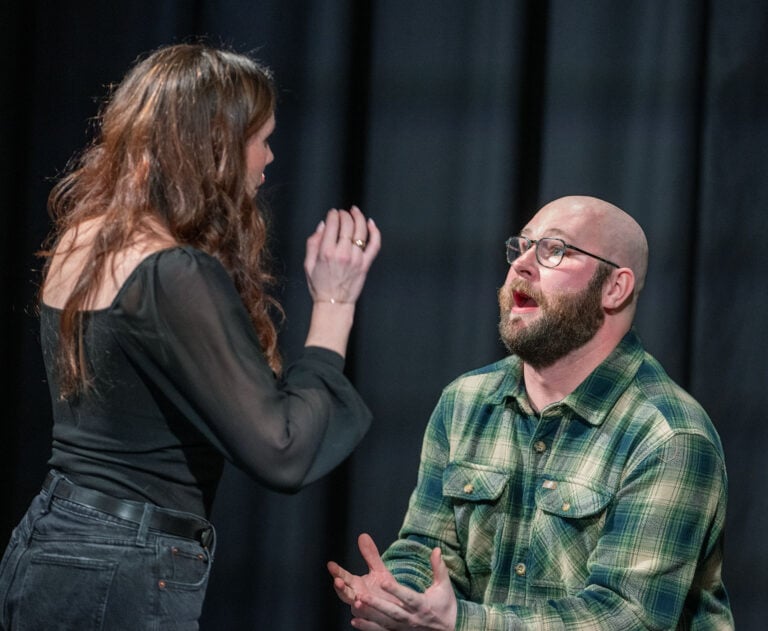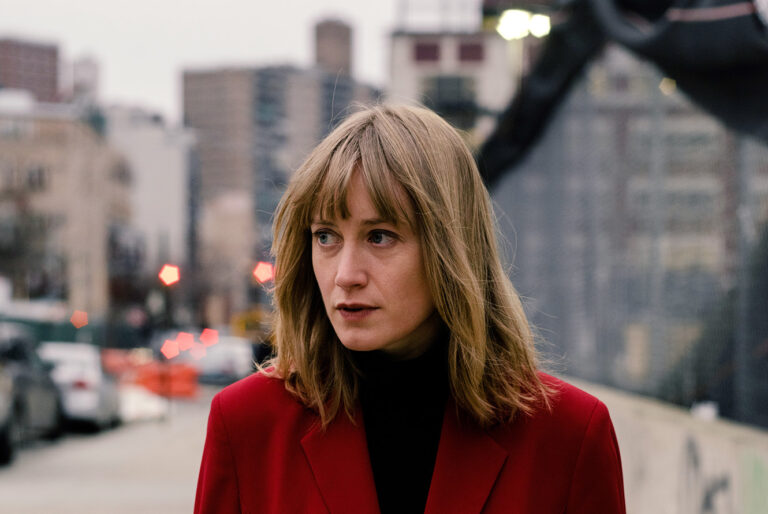A scene in Dawson City in February. Photo by Mike Thomas.
It allows people to get outside and take in new work at a safe distance from other “gallery” goers.
There’s also the Fireweed Heroes project, which has seen beaders in the Yukon, Northwest Territories and Alaska making lapel pins for healthcare workers (the effort originated in Dawson and eventually extended its pins to all frontline workers), and an online reading group that gathers via Zoom to discuss writing.
Findlay-Brook says there are some events that had to be cancelled (the ODD Gallery is closed indefinitely, a Jeremy Dutcher performance had to be suspended and a youth art enrichment program slated for March couldn’t go ahead), or postponed, such as the Dawson Daily News Print and Publishing Festival.
Still, she says, they’re looking for ways to make sure some events can go on at different times, or in altered formats.
One of those is the end-of-year SOVA show, which O’Grady says is usually a huge community event.
The exhibition, which allows students to showcase their final pieces for the year, will go ahead, albeit digitally.
O’Grady says there have been challenges in supporting the students through the final phase of making in preparation for the show. Some have had to leave the territory to travel home and don’t have great internet connections. Others are working in Dawson, borrowing tools and equipment from SOVA.
On the bright side, she says the semester was wrapping up when restrictions came into effect, so students were in a good place as far as knowing what their pieces were going to look like. Everyone was at the stage where they were prepared to hunker down and work.
An online gallery of that work will launch on April 23. O’Grady says that’s the school’s focus right now. After that, SOVA will look ahead to the fall semester.
She says there are existing models for low-residency classes that take place online. They can be effective, she says, but they’re no substitute for the kind of learning that takes place in person at SOVA, especially in the foundation year when students are learning to interact with each other, critique art and observe each other’s processes.
“And also, the most interesting part of this program, I think, and a really important part of it, I think, is actually being in Dawson,” she says.
Findlay-Brook says she thinks sharing will be key—both sharing ideas and sharing completed work, online and in other innovative ways.
“Mostly it feels like we’re at the very beginning,” she says. “People are just kind of waking up and trying to figure out where to go from here. I’m excited to see what will come together.”




